-
Earth Science Journal!
#25 Glaciers!
Ice Weathering, Erosion, and Deposition!
Glaciers break up, move, and deposit sediments.Watch this video first!1. Water and ice are pulled down to the sea by GRAVITY but are powered by THE SUN.
How can this be true?The sun powers the water cycle. Glacier ice begins as snow.
2. How can solid ice flow like a liquid?
It depends on the pressure over time.Just like rock layers can bend (fold) or break (earthquake).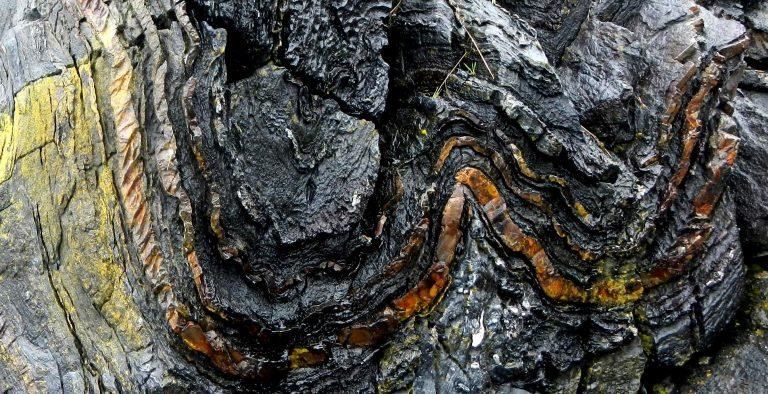

Folding and FaultingPeople have a hard time imagining the thickness of these continental glaciers.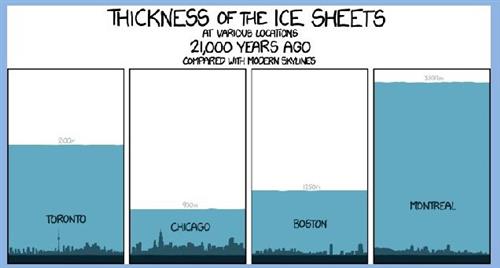 Here is an image to help!
Here is an image to help!
3. Continental Glaciers - Covering continents, these glaciers smooth off mountaintops and making valleys deeper and wider.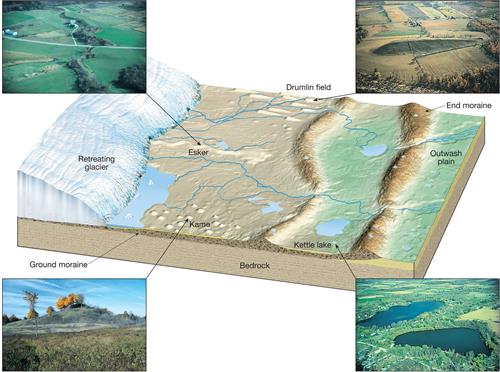
Esker: ridges made of sands and gravels, deposited by glacial meltwater rivers flowing through tunnels within and underneath glaciers.
Kettle lakes: When a block of glacial ice detaches from the glacier. Eventually, it becomes wholly or partially buried in sediment and slowly melts, leaving behind a pit. In many cases, water fills the pit and forms a pond or lake.
4. What is Ridge Road? An end moraine (terminal moraine) that marks how far the glacier advanced at one time.
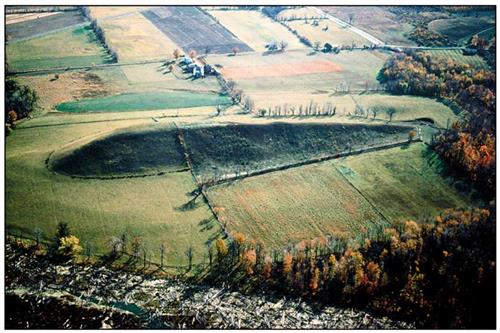
Which way did the glacier move to form this drumlin?5. Drumlins: long canoe-shaped hills of glacial till that have been streamlined by glacial movement.
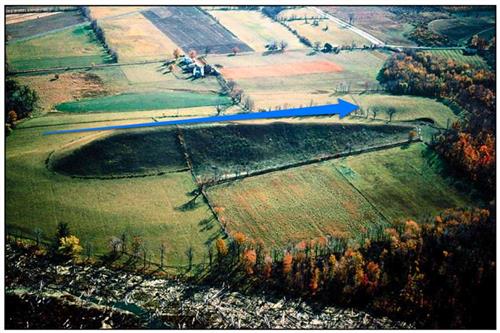
What would the profile of the above Drumlin look like?
Drumlin profile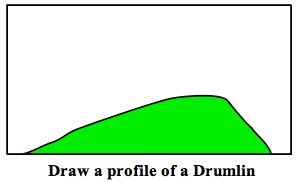
Draw an arrow above your profile showing the direction of the glacier.
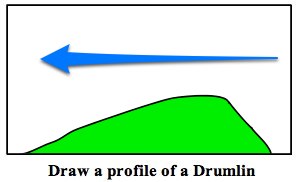
6. In which direction did the glacier move over the drumlin below?
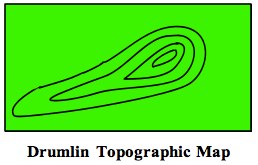
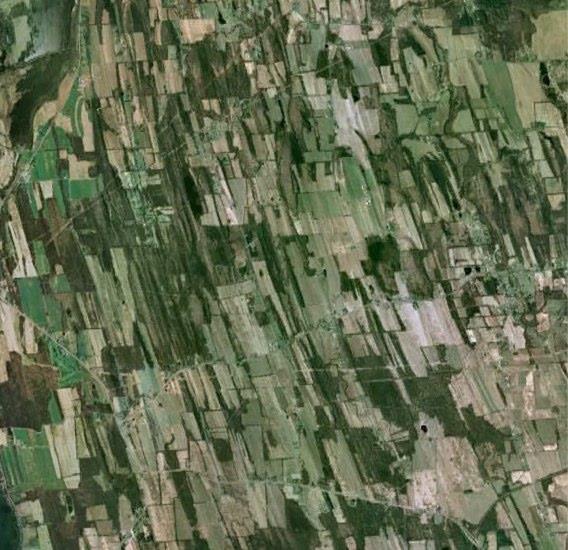
These are drumlin fields near the Finger Lakes.
They show the direction that the glacier moved.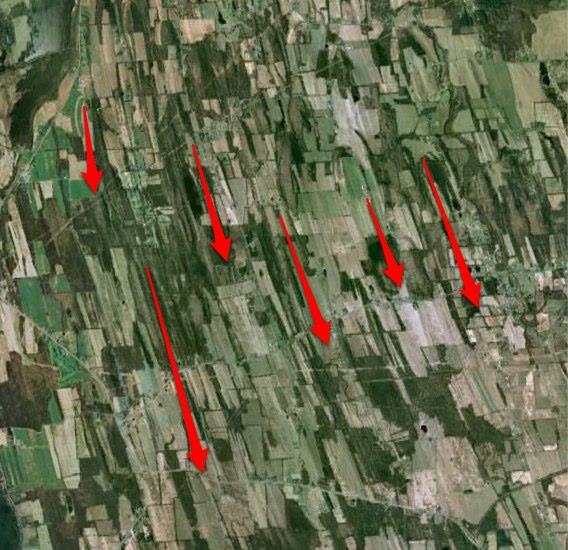
Glacial Erratics
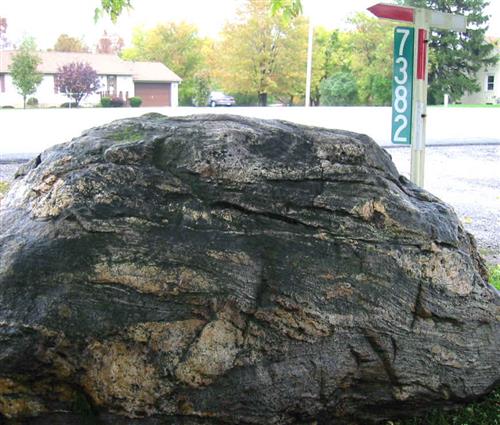 7. Glacial Erratic - Large partially rounded boulder that was transported by a glacier
7. Glacial Erratic - Large partially rounded boulder that was transported by a glacier
8. Sediment directly deposited by a glacier is UNSORTED, called Glacial Till (like it has been rototilled).
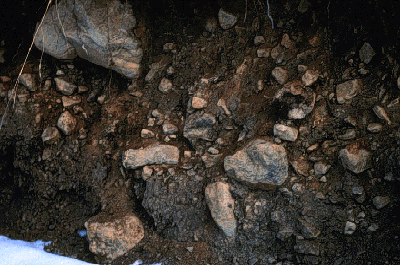
Mixed Sediment
Does this type of sediment look familiar?
It should.
In many places along Lake Ontario we need to climb down a bank of sediment that looks similar.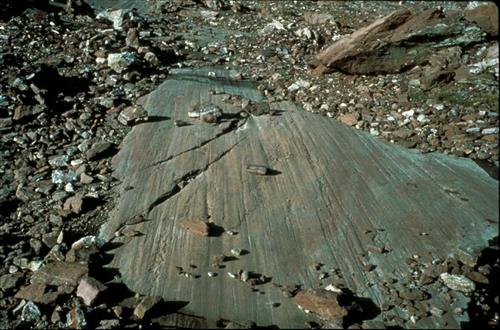
What is often found etched into the bedrock beneath this glacial till.
9. Glacial Striations-scratches and grooves caused by rocks dragged across the bedrock by glaciers. They show the direction of glacial movement.10. How do we know Glaciers were in Wilson, New York?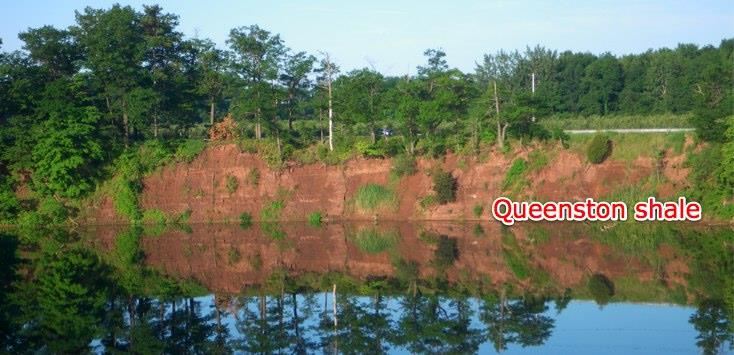 18-mile Creek and Wilson-Burt RoadThis is our bedrock!In Wilson, New York, under our feet, the bedrock consists of over 1500 feet of Queenston Shale.Shale is a brittle sedimentary rock that easily breaks into layers and makes up most of those flat red to gray lake stones.You throw and skip these stones when you visit the lake.
18-mile Creek and Wilson-Burt RoadThis is our bedrock!In Wilson, New York, under our feet, the bedrock consists of over 1500 feet of Queenston Shale.Shale is a brittle sedimentary rock that easily breaks into layers and makes up most of those flat red to gray lake stones.You throw and skip these stones when you visit the lake.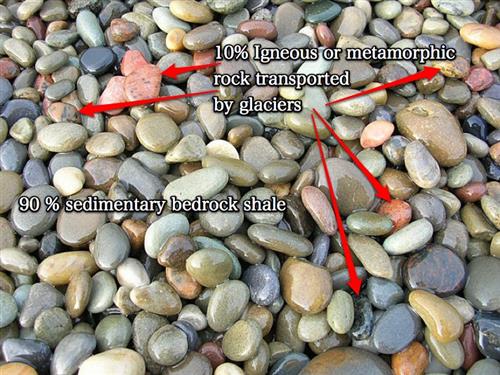 These rocks are often very different from our bedrock!These weird rocks must have been transported from somewhere else!
These rocks are often very different from our bedrock!These weird rocks must have been transported from somewhere else!
We also have some strange, large rocks on top of our bedrock!
11. What happens if a large flood covers the land?Where do the biggest rocks end up?
On the bottom!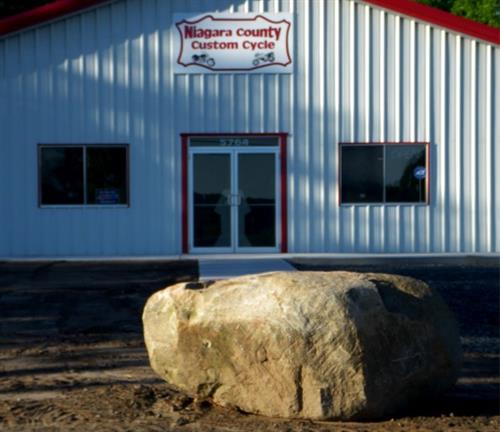 Not in Wilson.These large, strange rocks look nothing like our shale bedrock and are found on or near the surface.
Not in Wilson.These large, strange rocks look nothing like our shale bedrock and are found on or near the surface.
They are often slightly rounded and often have deep scratches on their surface.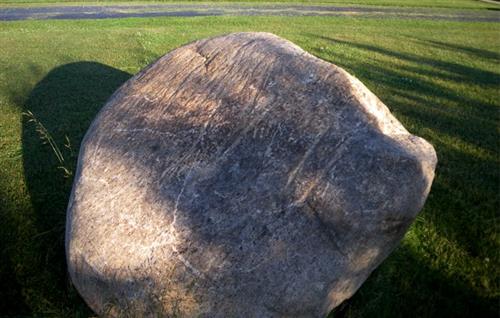 These glacial erratics are found all throughout Western New York.
These glacial erratics are found all throughout Western New York.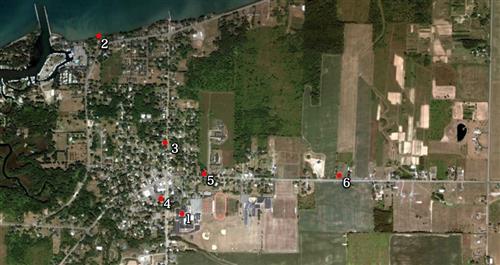 #1 is Wilson High School, and #2-6 correspond to some of the photos below.
#1 is Wilson High School, and #2-6 correspond to some of the photos below.
Sometimes, glacier erratics are used for monuments. #2 found along the lake shore in Wilson, New York
#2 found along the lake shore in Wilson, New York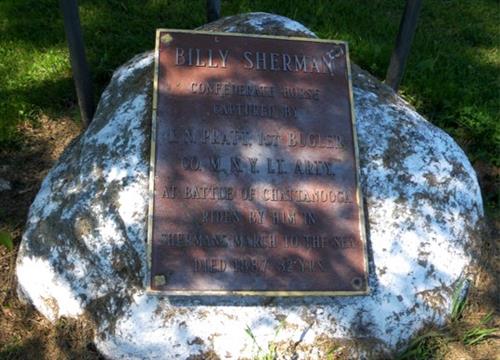 #6 found along Wilson-Burt Road in Wilson, New York
#6 found along Wilson-Burt Road in Wilson, New York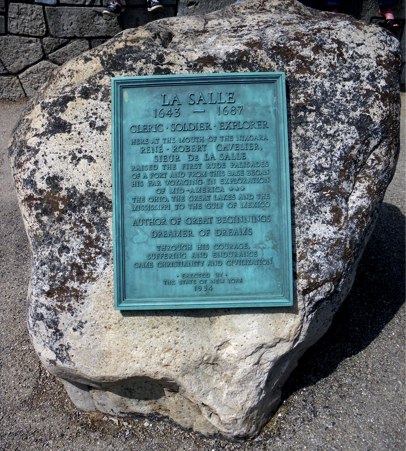
Glacial Erratic was used as a monument at Fort Niagara.
Sometimes these erratics are VERY large.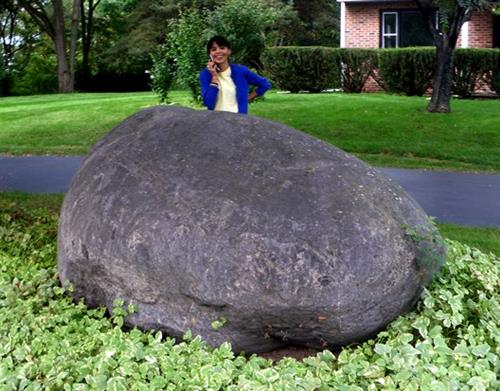 Glacial erratic on Sunset Drive in Lockport, New York.
Glacial erratic on Sunset Drive in Lockport, New York.
Sometimes, they are so large that farmers have used dynamite to blow them up so they can remove them from their fields.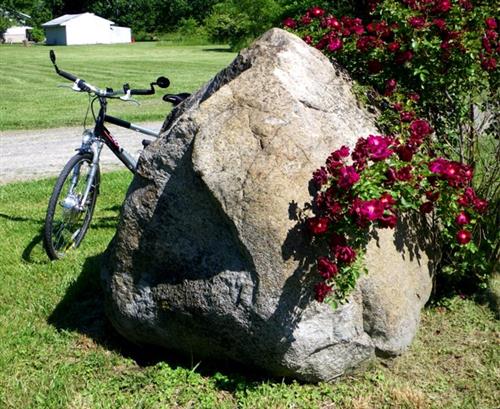 A chunk of an erratic in Wilson, New York
A chunk of an erratic in Wilson, New York
Because these rocks are not sedimentary but igneous and metamorphic, they are much more durable than our bedrock.This makes these rocks perfect for construction.
Here are a few places in Wilson where people have taken advantage of this glacially produced resource. Location: Lake Street, Wilson, NY
Location: Lake Street, Wilson, NY
Does this look familiar?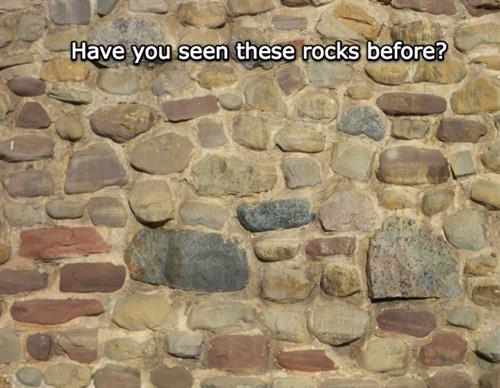
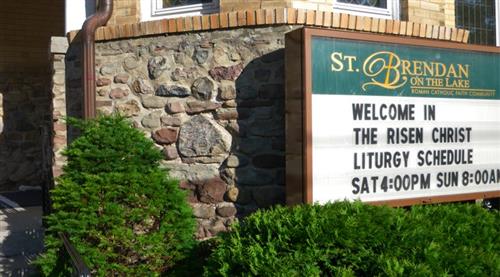 #4 on the Wilson map above.
#4 on the Wilson map above.
Does this look familiar? #5 Children often balance on this small wall when walking home from Elementary School.Many homes in Wilson have our glacial history built into their foundation!
#5 Children often balance on this small wall when walking home from Elementary School.Many homes in Wilson have our glacial history built into their foundation!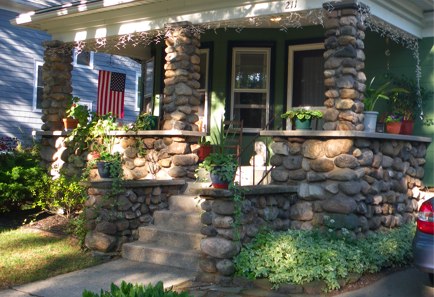 #3 in the Wilson image
#3 in the Wilson image
Glaciers have also left very large effects on the landscape of New York State.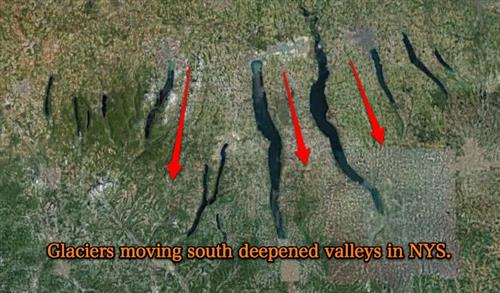 Such as the Finger Lakes.Why do some of these lakes have straight northern ends?
Such as the Finger Lakes.Why do some of these lakes have straight northern ends?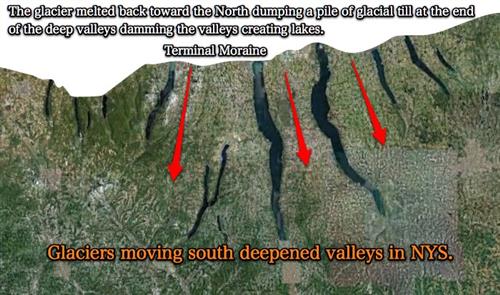
There are even drumlins close to us.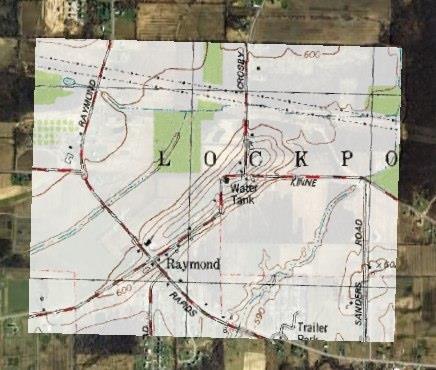 Part of a topographic map in Lockport.Which way did the glacier move?
Part of a topographic map in Lockport.Which way did the glacier move?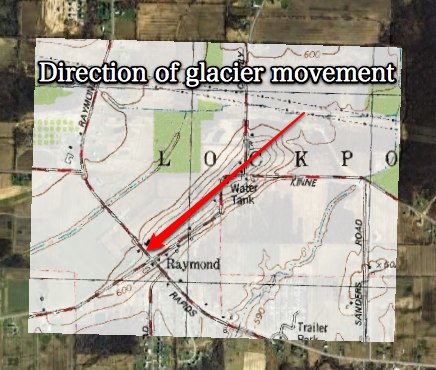 Remember that the steeper side faced the glacier.It's almost as if the drumlin points, showing us which way the glacier moved.
Remember that the steeper side faced the glacier.It's almost as if the drumlin points, showing us which way the glacier moved.
Write this in your journal.Continental Glaciers go over mountain tops and round them off.Valley Glaciers stay in the valleys, sharpening mountain peaks sharper.
12. Valley Glaciers—formed in the mountains, the snow has turned to ice, making rivers of ice that flow downhill. As they flow downhill, they gouge away and erode the sides of the mountains, producing U-shaped valleys.This U-shaped valley was once filled with a valley glacier!
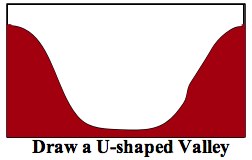
13. LATERAL moraines: Dark sediments on the sides of valley glaciers. 14. Dark line sediments in the middle are called MEDIAL moraines.
14. Dark line sediments in the middle are called MEDIAL moraines.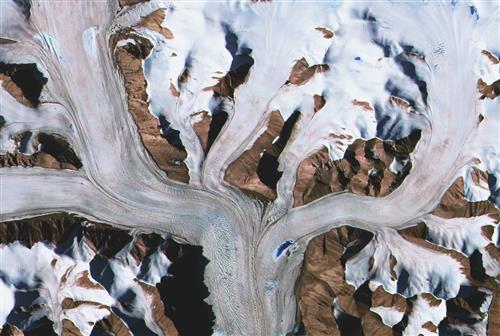 15. Like a river of water, glaciers move FASTER in the middle.
15. Like a river of water, glaciers move FASTER in the middle.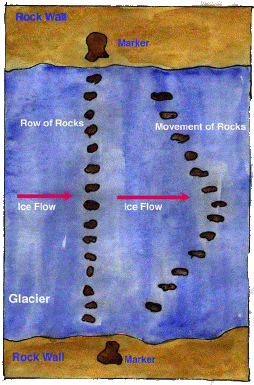

16. When glaciers meet the sea, they break off into ICEBERGS.
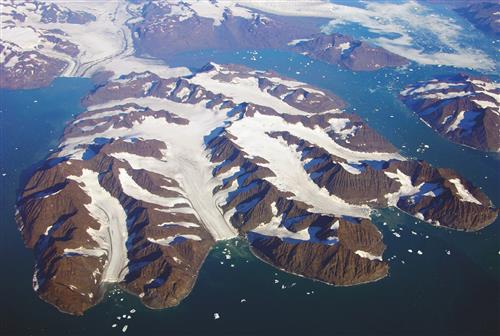 Just like 90% of your ice cube is beneath the water in your glass, 90% of an iceberg is beneath the ocean.
Just like 90% of your ice cube is beneath the water in your glass, 90% of an iceberg is beneath the ocean.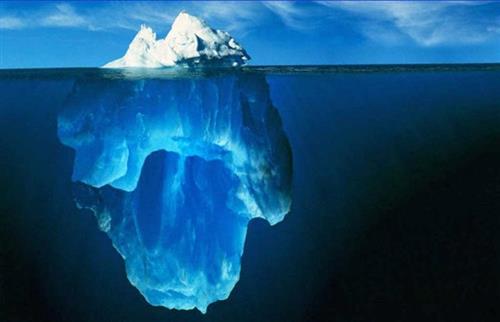
See our glacier retreat
Click on the link above.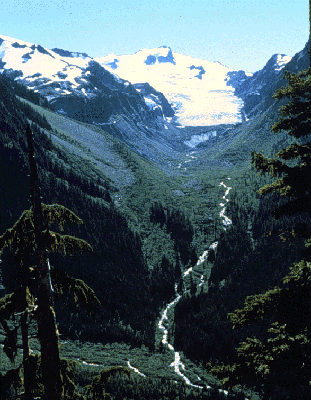
Here is a valley glacier that is retreating.
17. How does a glacier retreat?
by melting faster than it is moving downslope!Glaciers cannot move uphill.
Draw the following in your journals.
Rivers vs. Valley Glaciers
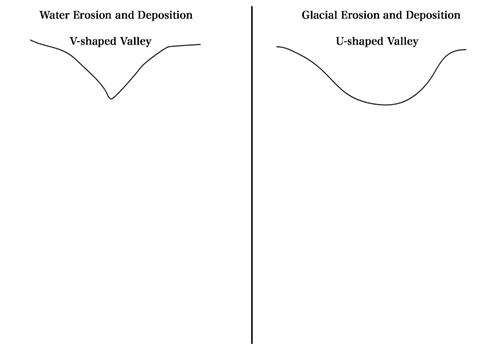
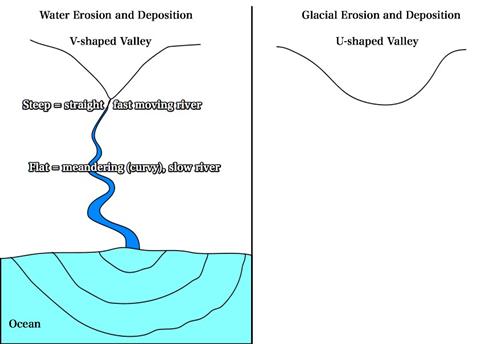
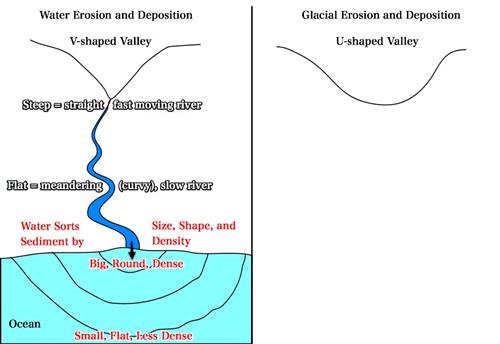
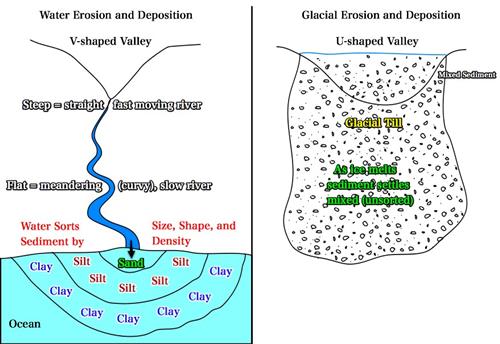

Reflection
Explain the differences and similarities between continental and valley glaciers.
What type of glacier-covered Wilson, and how do we know?

